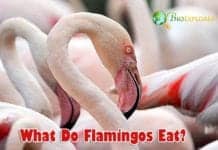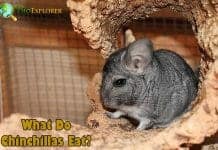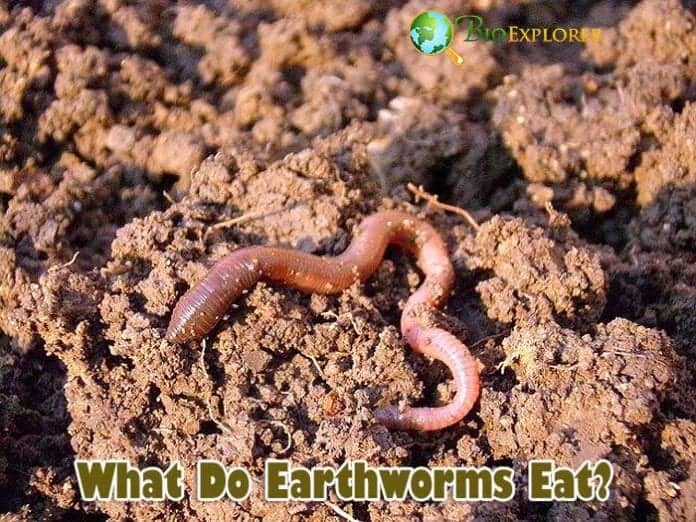
Earthworms are segmented worms that are tubular. These organisms are classified in the phylum Annelida. Earthworms are believed to be omnivorous, feeding on plants and animals. These tubular organisms are best described as detritivores that consume decomposing plant and animal matter.
What Do Earthworms Eat?
| The Red Worm | Eisenia fetida | Composting matters |
| The Little Tree Worm | Satchellius mammali | Leaf litter. |
| The Green Worm | Allolobophora chlorotica | Rich organic soils. |
| The Common Earthworm/ the Canadian Nightcrawler | Lumbricus terrestris | Organic matter in soil burrows. |
![]()
Types of Earthworms and their Habitats
Earthworms are classified under 16 families, which include: Ocnerodrilidae, Sparganophilidae, Ailoscolidae, Almidae, Lumbricidae, Lutodrilidae, Exxidae, Eudrilidae, Glossoscolecidae, Octochaetidae, Hormogastridae, Microchaetidae, Acanthodrilidae, Criodrilidae, Alluroididae, and Megascolecidae.
Generally, earthworms are classified based on their different ecotypes or ecophysiological categories, which include the following:
- Compost earthworms: These earthworms are mostly found in compost areas, or in places with an abundance of rotting plants.
- Epigeic earthworms: These earthworms are found in rotting logs and leaf litter, and they consume partially decayed organic material.
- Anecic earthworms: These earthworms are notable for their ability to pull decaying matter into their burrows.
- Endogeic earthworms: These earthworms consume soil that is rich in organic matter.
The examples of earthworms studied in this section are drawn from these ecotypes.
![]()
What Do Red Worms Eat?
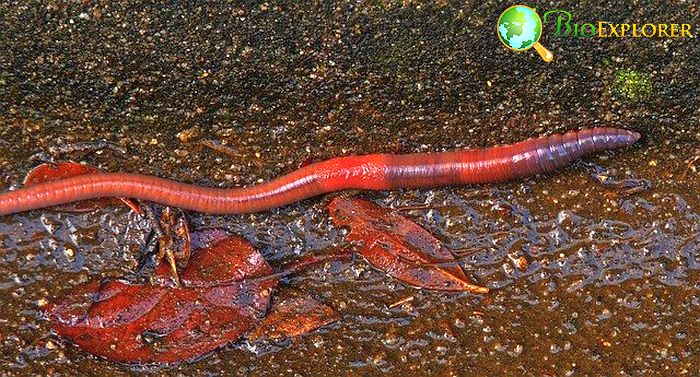
The red worm is also referred to as the red wiggler.
| Animalia | Opisthopora | Lumbricidae | Eisenia | Eisenia fetida |
- This species is commonly found in moist environments that are rich in organic material.
- The red worm consumes a wide array of composting matter, hence its usefulness in vermicomposting.
![]()
What Do Little Tree Worms Eat?
As suggested by its name, the little tree worm is a small earthworm species that grows to a length of about 3cm.
- This species commonly inhabits leaf litter in woodlands, marshy areas, riverbanks, and in the field margins.
- The Little Tree worms dine on leaf litter.
![]()
What Do Green Worms Eat?
The most exciting thing about the green worm is that it comes in two hue morphs, which includes the pink form and the greenish one.
| Animalia | Opisthopora | Lumbricidae | Allolobophora | Allolobophora chlorotica |
- This worm can be found in a myriad of habitats, including woodland areas, lawns, and arable land.
- The difference between the two forms is the preference attributed to soil moisture in their habitats.
- The green pigmented worm prefers moist soils, while the pink pigmented one has a preference for dry soils.
- This green earthworm species feed on fertile organic soils.
![]()
What Do Canadian Nightcrawlers Eat?
The common earthworm (aka Canadian Nightcrawler) is a relatively giant worm that can grow to lengths of 25 cm.
| Animalia | Opisthopora | Lumbricidae | Lumbricus | Lumbricus terrestris |
- The preferred habitat of the nightcrawler consists of moist soils that are rich in organic matter.
- These Canadian Nightcrawlers feed on organic matter in their soil burrows.
![]()
How Do Earthworms Hunt?
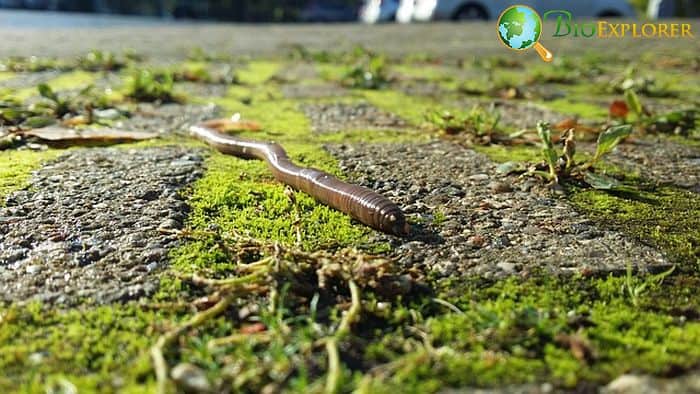
Earthworms do not necessarily hunt. These organisms have been observed feeding on dead members of their species. In such instances, they capture the dead organisms and proceed to consume it.
![]()
When Do Earthworms Eat?
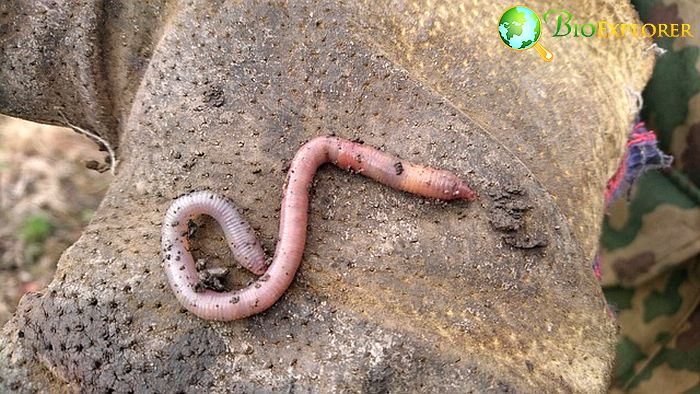
Earthworms are nocturnal, which means they wander out during nightfall to feed. During the day, these organisms are in their moist hiding areas.
![]()
How Often Do Earthworms Eat?
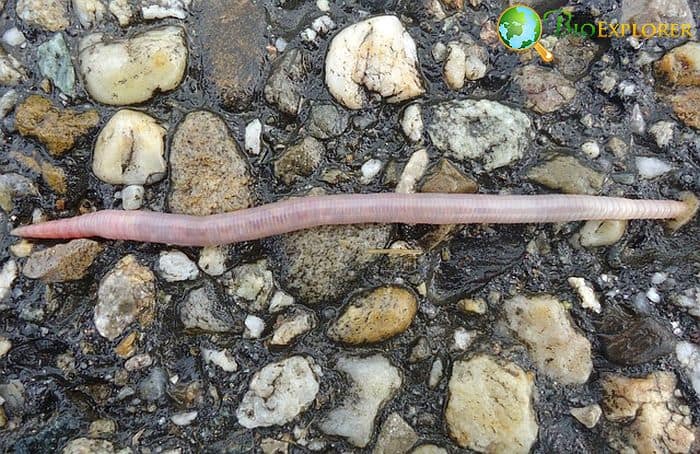
Earthworms are very busy animals, which confirms their high feeding rate. When looking at the red wiggler, for example, this earthworm can feed up to 50% of its body weight every day.
![]()
What Eats Earthworms?
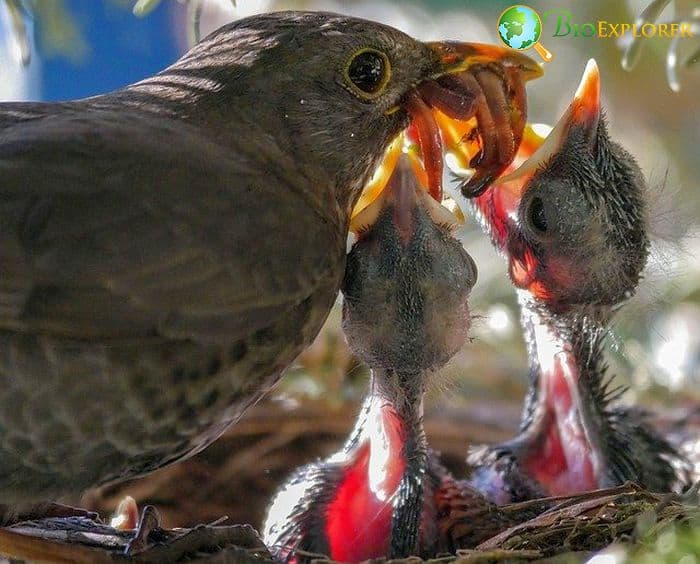
Earthworm predators include organisms like centipedes, birds, flatworms, lizards, snakes, some crawling insect species such as beetles, turtles, and fish.
- With their many predators, earthworms have developed escape strategies to bolt from predation.
- These organisms have large axons, which transmit the fastest nerve signals.
- The emergency signals transmitted are responsible for triggering reflex escape tendencies when faced with danger from predators or other forms of threat.
![]()
Where Do Earthworms Fit in the Animal Food Chain?
Earthworms play an essential role in the animal food chain.
- These organisms are an excellent source of proteins to organisms that rely on them for food such as lizards, crawling insects, turtles, fish, centipedes, birds, salamanders, and toads.
- Earthworms play an instrumental role in aerating the soil and promoting nutrient cycling.
- This role helps rid the environment of wastes, which creates a perfect environment for other organisms within the earthworms’ ecosystem to thrive and propagate.
![]()
In general, the absence of earthworms in the animal food chain would compromise the overall health of their respective ecosystem.



